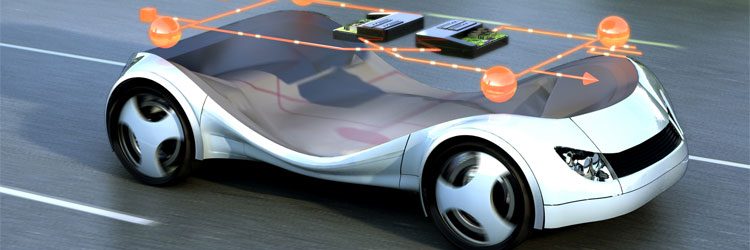
Siemens and Streetscooter have announced that they will work cooperatively to equip a new class of modular electronics and software technologies into Streetscooter’s short distance electric vehicles. The technologies themselves were developed as part of the RACE project (Robust and reliable Automotive Computing Environment for future eCars), a German business/academic/government partnership dedicated to the development of advanced electrics and electronics for cars (automotive E/E). The companies expect to incorporate the RACE architecture into a Streetscooter electric delivery van by December 2014. Testing of the RACE system will take place at the Siemens' research center in Munich.
RACE is conceptually founded on a study entitled “The Software Car” authored by Fortiss researcher Christian Buckl, which focuses on Information and Communications Technology (ICT) as an Engine for the Electromobility of the Future. Race partners include Siemens, TRW Automotive, AVL Software and Functions, Fortiss, the University of Stuttgart, the Technical University of Munich, the Fraunhofer Institute for Applied and Integrated Security, and RWTH Aachen University.
Mimicking PCs - The RACE system mimics the uniform plug-and-play approach for interchangeable hardware and software that is common to personal computers and other consumer electronics technologies. The RACE developers envision a future where vehicle functions can be repaired or replaced, or new capabilities added, by snapping in, or uploading, new componentry and system software (described by Siemens’ representatives as ‘modules’ or ‘apps’).
The RACE developers wish to dramatically reduce the complexity of the electronics systems found in today’s cars. The use of a single computer system makes this possible (redundancy built in, however). Standardization is also key. The RACE framework will provide standardized application programming interfaces (APIs) to in-car sensors (speed, position, water temp, etc.), as well as vehicle actuators (fuel pump, breaks, steering, etc.).
Self-Driving Vehicles - If proven successful, the RACE framework would be a boon to automotive makers. The current state of the practice stifles innovation. It is simply too complicated to add new capabilities easily, even more if existing vehicles are to be retrofitted.
The RACE framework would be especially useful for autonomous driving, regardless of the level of actual autonomy supported (simple driver assistance to full autonomy, say). For the latest models coming off the manufacturer’s assembly lines, “connected car” technology will be commonplace. For vehicles enabled by the RACE technologies, new capabilities, enabled by software, can simply be “pushed” to them. This could include the latest infotainment software, but it is doubtless that it would also include the updates to driver assistance systems, communication and mapping software, as well as wholly new autonomous driving features and functionality.
Tags - Siemens, Streetscooter, RACE TRW Automotive, AVL Software and Functions, Fortiss, the University of Stuttgart, the Technical University of Munich, the Fraunhofer Institute for Applied and Integrated Security, and RWTH Aachen University.
Dan Kara is Practice Director, Robotics at ABI Research. He can be reached at kara(AT)abiresearch.com. You can follow Dan Kara on Twitter: @ABI_Robotics.